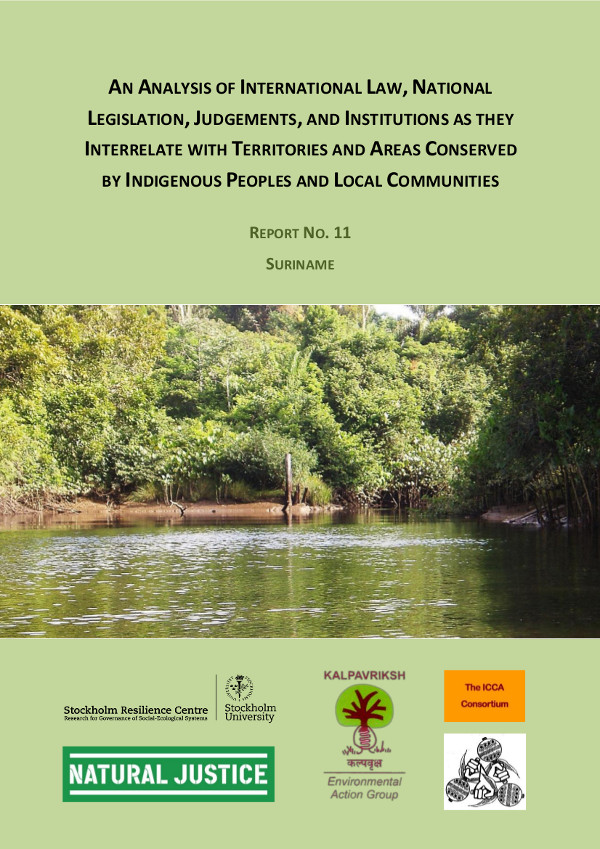First published on 09/30/2012, and last updated on 06/02/2017
The four most numerous indigenous peoples are the Kali’na (Caribs), Lokono (Arawak), Trio (Tirio, Tareno) and Wayana. In addition, there are small settlements of other Amazonian indigenous peoples in the south-west and south of Suriname, including the Akurio, Wai Wai, Katuena/Tunayana, Mawayana, Pireuyana, Sikiiyana, Okomoyana, Alamayana, Maraso, Sirewu and Sakëta. The Kaliña and Lokono live mainly in the northern part of the country and are sometimes referred to as ‘lowland’ indigenous peoples, whereas the Trio, Wayana and other Amazonian peoples live in the South and are referred to as ‘highland’ indigenous peoples (ICCA Consortium/VIDS, 2012).
Suriname also has a substantial (almost 15%) population of ‘maroons’ or ‘Bushnegroes’, which are descendants of African slaves who fought themselves free in colonial times and were able to establish communities in the Interior. They live tribally, according to ancestral cultures and traditions, under comparable circumstances as the indigenous peoples. There are six maroon tribal peoples in Suriname: the Saamaka, Okanisi, Paamaka, Matawai, Kwinti and Aluku.
Between 2011-2012, the ICCA Consortium undertook an international-to-local analysis of a spectrum of laws relevant to ICCAs. The reports analyze the effects of laws, policies and implementing agencies on ICCAs, and explore the diversity of ways in which Indigenous peoples and local communities are using the law to sustain the resilience of their ICCAs. Goals:
- Recognizing and supporting conservation by indigenous peoples and local communities.
- Analyses of international law, national legislation, judgments, and institutions as they interrelate with territories and areas conserved by indigenous peoples and local communities.
The synthesis report was launched in 2012 at the World Conservation Congress (Jeju, Korea) and the 11th Conference of the Parties to the Convention on Biological Diversity (Hyderabad, India)
